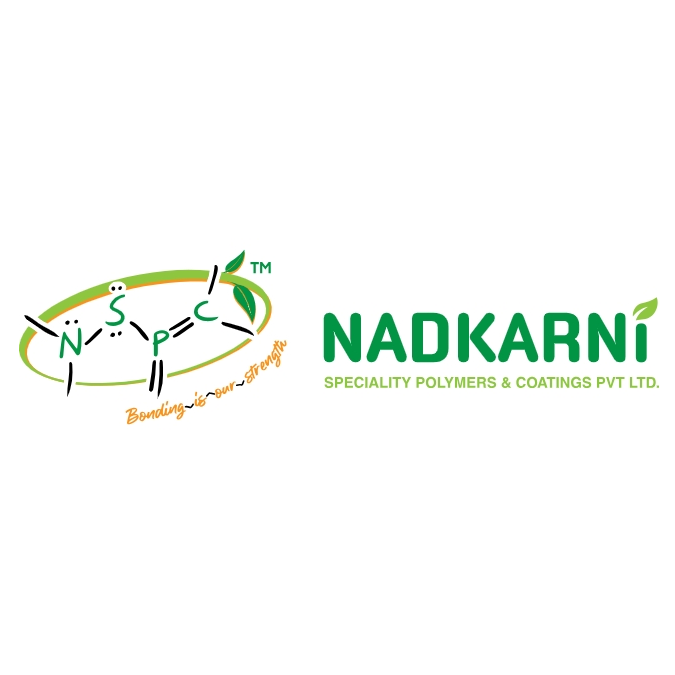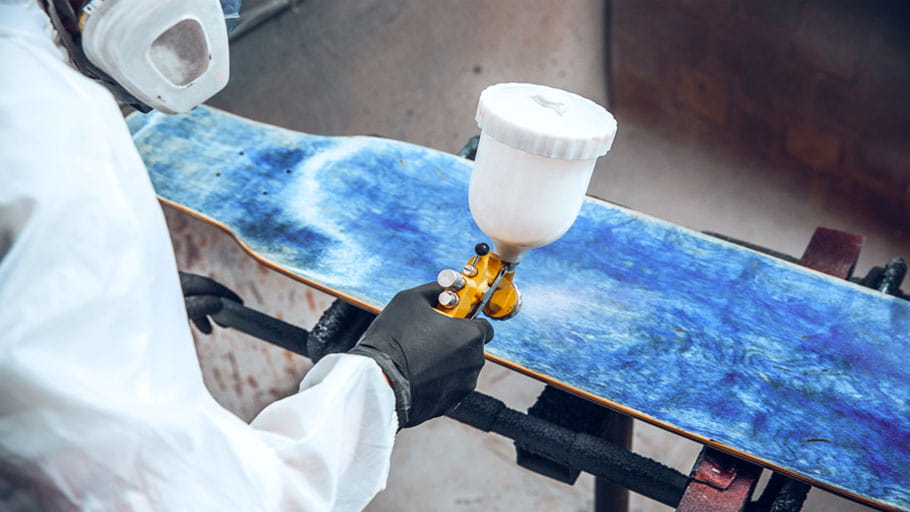


Send Email


2K Epoxy Resins - NEOPOXY 1100×75 / CAS 61788-97-4
REQUEST A QUOTATION
SubmitDESCRIPTION
Next Level Epoxy: NSPC’s Greener Alternative for 2K Epoxy Resins
Typically, a two-pack epoxy system employed in the coatings industry consists of an epoxy resin (Part A) and a curing agent (Part B). When mixed and applied on the surface, the two parts react to form a cross-linked network resulting in a cured film. The composition of the two parts (A and B) determines the properties and performance of the final film. Let’s try to understand these two parts separately.
Epoxy Resin (Part A)
The most popular epoxy resin available commercially is synthesized from bisphenol-A and epichlorohydrin, both of which in turn are petro-derived, making traditional epoxy resins 100% petroleum-based. The ratio in which the precursors are taken determines the molecular weight of the epoxy resins produced.
Epoxy Resin Type | Physical State | Epoxy Equivalent Weight (solids) [g/eq epoxide] |
Liquid | Liquid | ~190 |
Type 1 | Solid | ~450 |
Type 2 | Solid | ~900 |
Type 7 | Solid | ~2000 |
Type 9 | Solid | ~3200 |
The different molecular weights allow for different cross-link densities in the final film. This, in combination with the curing agent used, practically translates into the mechanical and chemical resistance performance of the coating produced.
Curing Agent (Part B)
Different Curing Agents impart different properties to the final coating. Hence, the selection of the right curing agent for the intended use is vital. My previous articles on Epoxy Curing Agents (Part 1andPart 2) discuss six of these in detail. Here is a summary of the same:
Curing Agent | Advantages | Disadvantages | Uses |
Amines/ Polyamines | [Fast Cure] [Excellent Exterior Durability] [Excellent Adhesion] [Low Colour] | [Moisture Sensitive] [Blushing] [Expensive] [Low Heat Resistance] | [Flooring] [Exterior Applications] [Art] |
Polyamides/ Polyamidoamines | [Workable Potlife for Tropical Climates] [Good Flexibility] [Good Adhesion] [Good Exterior Durability] [Low Colour] [High Bio-based content from Food-Chain Materials] | [Curing issues at Low Temperatures] [Moisture Sensitive] [Blushing] [Low Heat Resistance] [High Viscosity] [High Colour] | [Coatings] [Adhesives] [Laminates for Tropical Climates] [Exterior Applications] |
Phenalkamines | [Workable Potlife at Low Temperature] [Rapid Cure at Low Temperatures] [Moisture Resistant] [Surface Tolerent] [Anti-corrosive properties] [Low Viscosity] [Good Flexibility] [Excellent Adhesion] [Low Cost] [High Bio-based content from Non-Food Chain Materials] | [Short Potlife in Tropical Conditions] [Higher Colour] [Limited Exterior Durability] | [Marine Coatings] [Industrial Coatings] [Concrete] [Flooring] [Low Temperature Applications] |
Anhydrides | [Fast Cure] [Excellent Heat Resistance] [Good Mechanical Properties] [Good Electric Insulation] | [Elevated Temperature Cure] [Moisture Sensitive] [Short Potlife] [Can be Hazardous] | [Laminates] [Encapsulation] [Potting] |
Phenalkamides | [All-weather application] [Longer Potlife than Phenalkamines] [Faster Cure than Polyamides] [Lower Viscosity than Polyamides] [Good Exterior Durability] [Good Moisture Tolerance] | [Slower Curing than Phenalkamines at Low Temperatures] [Higher Colour] [Higher Viscosity than Phenalkamines] | [Effective Curing Agent for all Climates] [Exterior Applications] [Coatings] [Adhesives] |
Mercaptans | [Good Flexibility] [Low-Temperature Curing] [Excellent Adhesion] [Low Viscosity] [Low Shrinkage] | [Strong Odour] [Limited Exterior Durability] [Moisture Sensitive] | [Low-Temperature Applications] [Low-Viscosity Applications] |
Greener 2K Epoxy Resins
One of the most popular Epoxy Resins currently employed in industries is the 75% Epoxy Resin which is a Type 1 Epoxy Resin with Solids Equivalent weight of 450g/epoxide. This 100% petro-derived resin is reacted with the various curing agents to obtain the desired properties.
But, what if one could obtain the benefits of a phenylamine-epoxy system with all types of curing agents?
That’s exactly what ourNEOPOXYTMResins offer. By chemically incorporating the cardanol molecule in the epoxy resin, NEOPOXY resins inherently provide excellent anti-corrosive properties, excellent flexibility, excellent adhesion, excellent wetting properties, and infinite tolerance to Xylene as the sole solvent. All this with 20-30% non-food chain biobased content in the resin, making a significant step towards sustainability.
Better still, these resins can cure with all standard epoxy-curing hardeners. Therefore, a NEOPOXY-polyamine system would show better corrosion resistance, flexibility, adhesion, and wetting than a traditional epoxy-polyamine system.

How can NEOPOXYTMResins help in reducing the overall cost of formulations?
- Lower Hardener Requirement:
- Since our NEOPOXYTMResins have a higher equivalent weight than traditional epoxies, their hardener requirements are significantly lower. Resultantly, formulators can make more cost-effective formulations by using NEOPOXYTMResins.
- NEOPOXYTM1100×75: reduces Hardener requirement by ~ 60% (reformulation may be needed).
- NEOPOXYTM500×75: reduces Hardener requirement by ~ 10% (reformulation is optional as it can easily replace 75% Epoxy Resin).
Theoretical solid weight ratios of[Epoxy: Hardener]required for an ideally crosslinked network: | |||
Hardener* | Standard Epoxy 450 (75% soln.) EEW (solids) = 450 g/eq | NEOPOXYTM500×75 EEW (solids) = 500 g/eq | NEOPOXYTM 1100×75 EEW (solids) = 1100 g/eq |
AHEW = 100 g/eq | 4.5 : 1 | 5 : 1 | 11 : 1 |
AHEW = 120 g/eq | 3.8 : 1 | 4.2 : 1 | 9.2 : 1 |
AHEW = 150 g/eq | 3 : 1 | 3.3 : 1 | 7.3 : 1 |
AHEW = 180 g/eq | 2.5 : 1 | 2.8 : 1 | 6.1 : 1 |
AHEW = 210 g/eq | 2.1 : 1 | 2.4 : 1 | 5.2 : 1 |
AHEW = 240 g/eq | 1.9 : 1 | 2.1 : 1 | 4.6 : 1 |
*Hardener: Polyamide, Polyamine, Phenalkamine, Phenalkamide, etc. | |||
- Infinite dilution in Xylene as the sole solvent:
Standard Epoxy 450 Resins (75% solution) need more expensive Butanol in formulation (typically Xylene/Butanol is 80/20) to achieve infinite dilution tolerance. Eliminating Butanol also helps simplify solvent storage and handling during production.
- Inherent Surface Wettability:
As a virtue of cardanol’s excellent wetting abilities, NEOPOXYTMResins inherently demonstrate good wettability on diverse substrates. Therefore, no to low dosage of wetting agents is suggested while formulating paints with NEOPOXYTMResins. This further helps in reducing the cost incurred by incorporating the expensive wetting additives that are currently used in Epoxy systems.
Conclusion
NEOPOXYTMResins offer a more environmentally friendly option compared to traditional 2K Epoxy Resins. With their inherent properties, formulators can create systems with enhanced properties while also reducing their overall cost.
Our research and development team is committed to advancing sustainability efforts. Our aim is to develop systems that are 100% bio-based and sustainable. NEOPOXY Resins are a significant step in our pursuit of a future where reliance on petrochemicals is diminished, and eventually eliminated.
Join us in our journey and upgrade to the next level of epoxy resins!
Typical Properties
GET SAMPLE
Submit- Overview
- Descriptions
- Sample

















